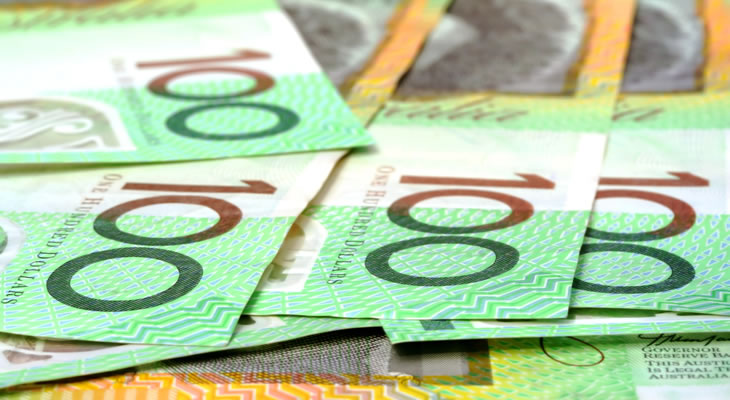- ‘Brexit’ Concerns Weigh on Pound – ICM and IMF statements worsen investor anxiety
- Chinese Trade Data Bolsters AUD – Commodity currencies like ‘Aussie’ up
- Oil Optimism Influences Iron Ore Price Surge – Australia’s commodity bullish
- Key Data Due Tomorrow – BoE rates and Australian unemployment due Thursday.
The Pound Sterling to Australian Dollar (GBP/AUD) exchange rate has plummeted this week after a brief attempt to gain on Monday failed. As risk-sentiment rises on global economic and trade information, the volatile Pound is held down by UK concerns.
The GBP/AUD pair sustained losses of over -180 pips during Tuesday’s session, and while the pairing’s descent has slowed, with GBP/AUD trending in the region of 1.8588 on Wednesday, it is already well below the week’s opening levels of 1.8707, hitting its lowest point since January 2015.
Bullish UK CPI Unable to Buoy Pound (GBP) as ‘Brexit’ Fears Weigh
Hopeful Consumer Price Index (CPI) datasets released from Britain yesterday may have given the Pound strength in some of its pairs, but was unable to help it stand up against the Australian Dollar.
The key year-on-year print scored 0.5% in March, above the previous figure of 0.3% and forecasts of 0.4%. Most other price index data released for the nation yesterday also printed positively, but was overshadowed towards the end of the day by global news and hiked ‘Brexit’ bets.
The ICM group released new results from an EU referendum poll of 2,030 individuals on Tuesday afternoon. While the previous poll indicated a 1% lead for the ‘Remain’ campaign, the new poll had ‘Leave’ with a 3 point advantage of 45% over ‘Remain’s’ 42%.
The results, conducted between the 8th and 10th of April, may have been influenced by public outrage towards a Pro-EU leaflet that was funded with £9m in taxpayer money.
The International Monetary Fund (IMF) also released statements on Tuesday afternoon. The organization claims that a so-called ‘Brexit’ would not only harm Britain’s economy, but also had the potential to cause ‘severe regional and global damage’ and would present considerable economic challenges to UK and the rest of Europe.
Australian Dollar (AUD) Strengthens on Bullish Commodity and Trade News
Domestic difficulty in Britain dragged on the already weak Pound, which was pulled downward by a series of good news for the commodity bloc and the Australian Dollar.
Demand for key global commodities like oil and iron ore are up again this week, with oil’s gains largely due to the imminence of OPEC’s meeting on the 17th of April.
The group’s members are widely anticipated to be striking a deal to ‘freeze’ oil production and ramp up prices and demand, and investor excitement has already driven oil higher.
Boosting the situation further is new Chinese data released this morning. While the powerful nation’s trade balance was revealed to have dipped, exports and imports have risen considerably. Reuters writes;
“China’s imports of iron ore rose 6.5 percent in the first quarter of the year, the country’s customs authority said on Wednesday.
Ahead of the release of official commodity import and export data for March, the General Administration of Customs also said that crude oil imports over the first three months of the year rose 13.4 percent.”
With such a bullish rise in iron ore imports, the ‘Aussie’ Dollar gained additional strength that will hinder potential GBP/AUD growth.
Unfortunately, negative Westpac consumer confidence reports released earlier today weighed slightly on AUD strength, allowing the Pound to hold ‘Aussie’ rallies at bay. A March figure of -2.2% was undercut by even lower confidence of -4.0% in April.
Pound Sterling to Australian Dollar Exchange Rate Forecast: BoE Decision, Jobs Data Ahead
While the GBP/AUD pair currently fluctuates undecidedly, movement is likely to become more inspired towards the end of the week as investors adjust to major economic events.
Significantly, the Bank of England (BoE) is due to announce its latest rates and asset purchase target decisions at midday during the London session.
The BoE is currently expected to keep rates on hold at the record low 0.50%, but ‘Brexit’ fears taking hold may have the central bank indicating whether or not future cuts are being discussed.
On the other hand, a slew of important Australian data is set for release early tomorrow morning. This includes March’s anticipated unemployment score which is currently projected to worsen slightly from 5.8% to 5.9%. However, employment change data is forecast positively and a consumer inflation expectation report is also due.
Investors are highly likely to react to the data if it prints higher or lower than expected, but regardless of results, the continued health of commodity trade is sure to keep investors favouring riskier commodity currencies like the ‘Aussie’, especially as Sunday’s OPEC meeting draws closer.
The Pound Sterling to Australian Dollar (GBP/AUD) exchange rate currently trends around 1.8588 while the Australian Dollar to Pound Sterling (AUD/GBP) exchange rate trends in the region of 0.5378.



Comments are closed.